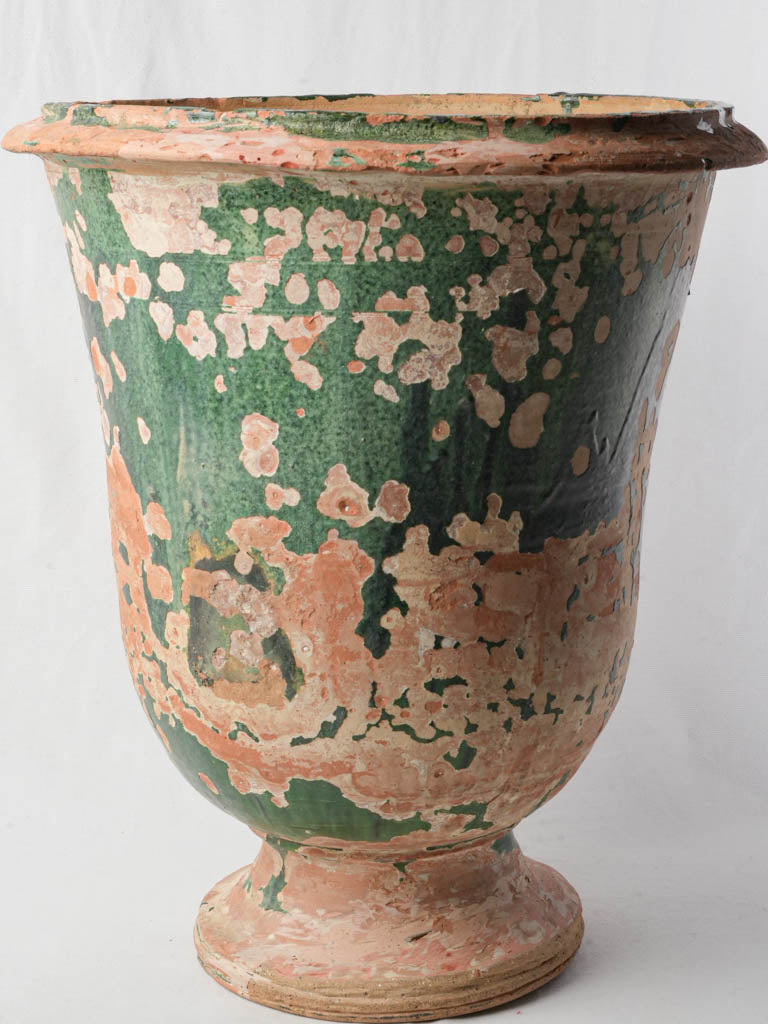
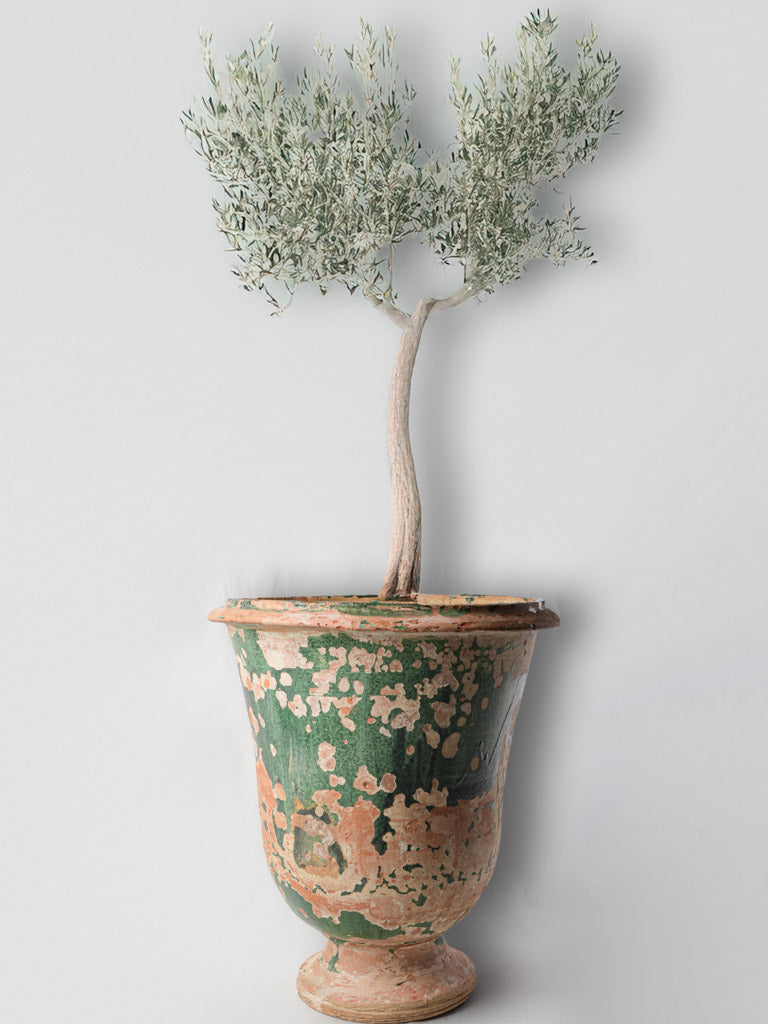
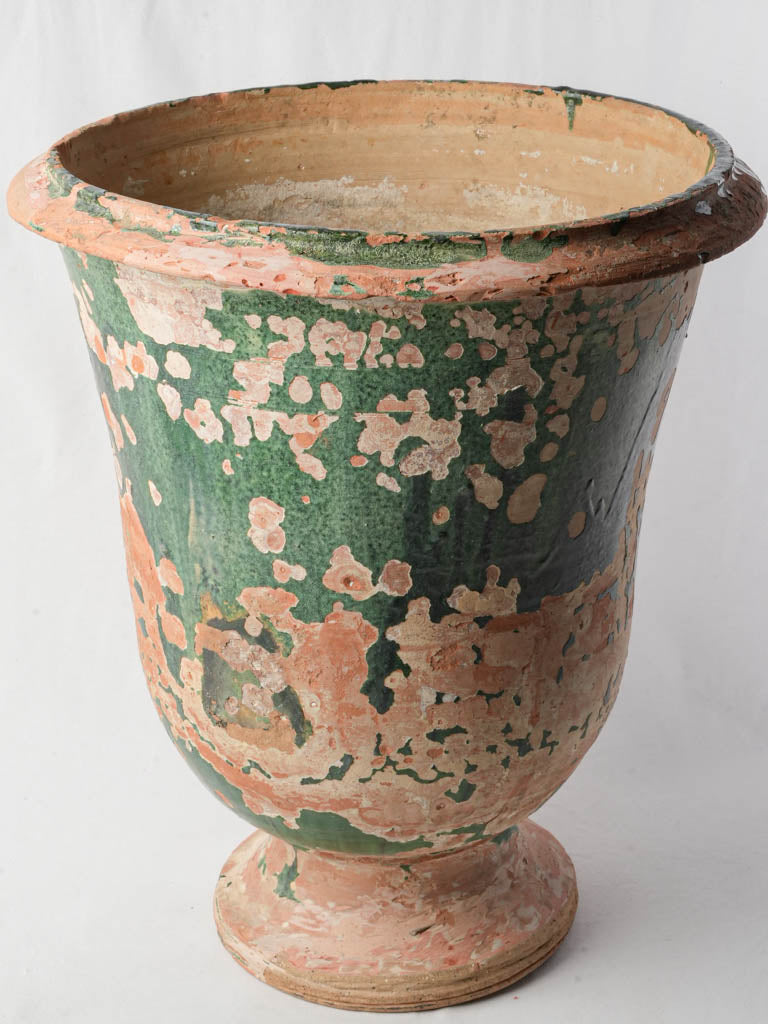
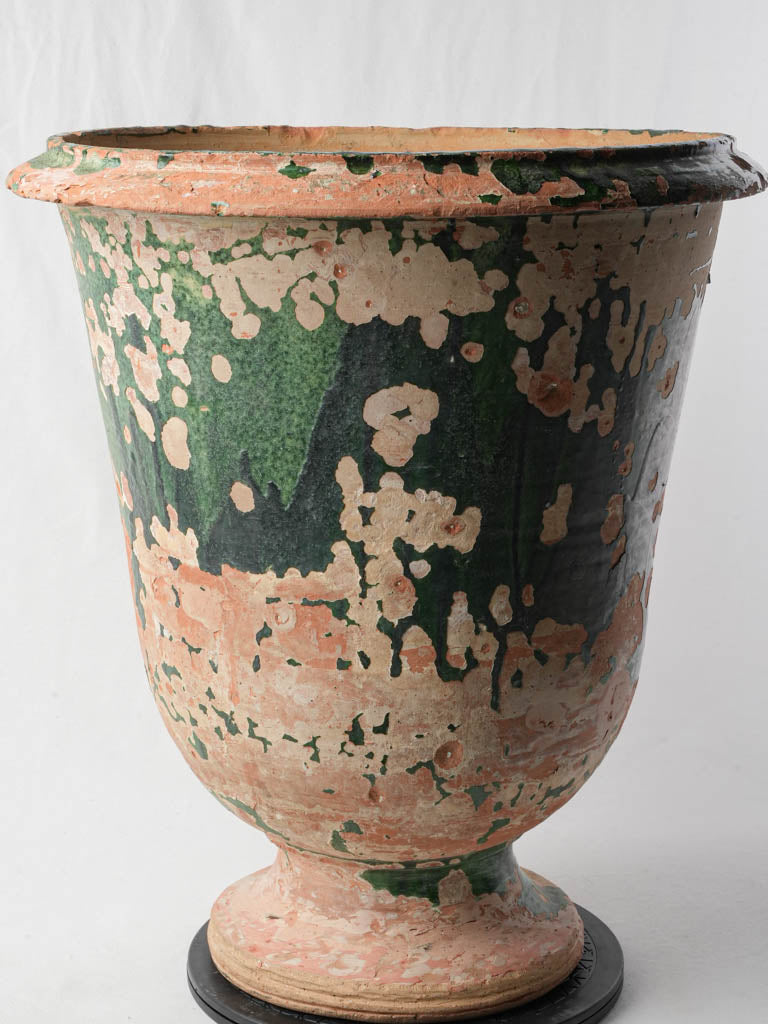
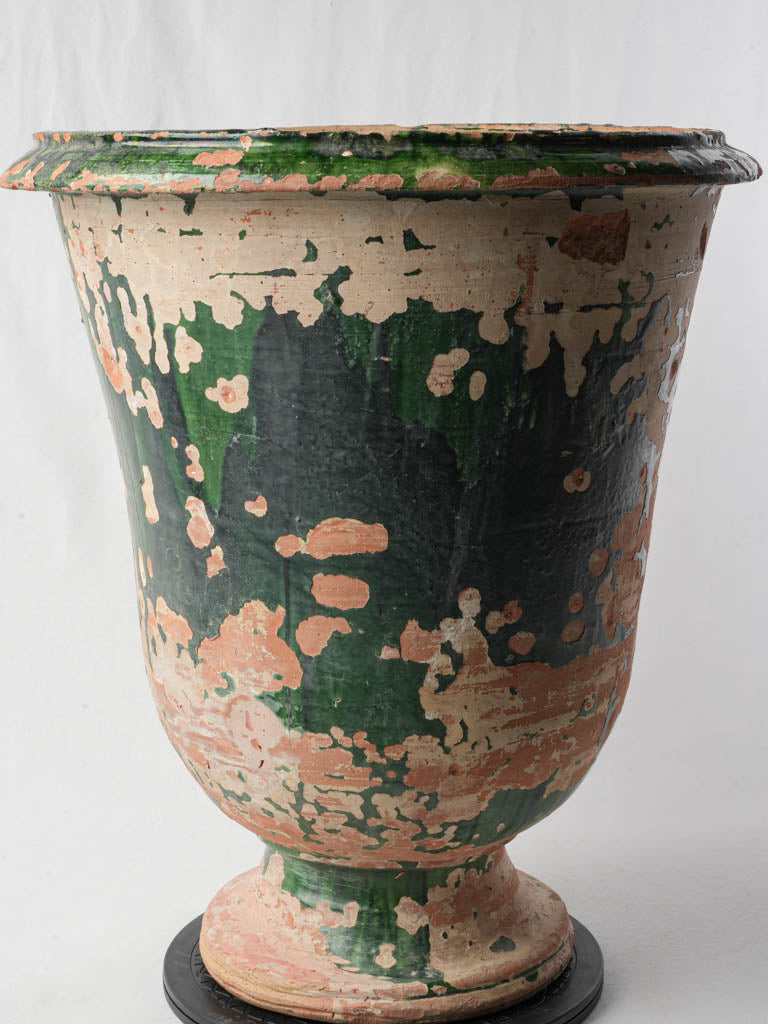
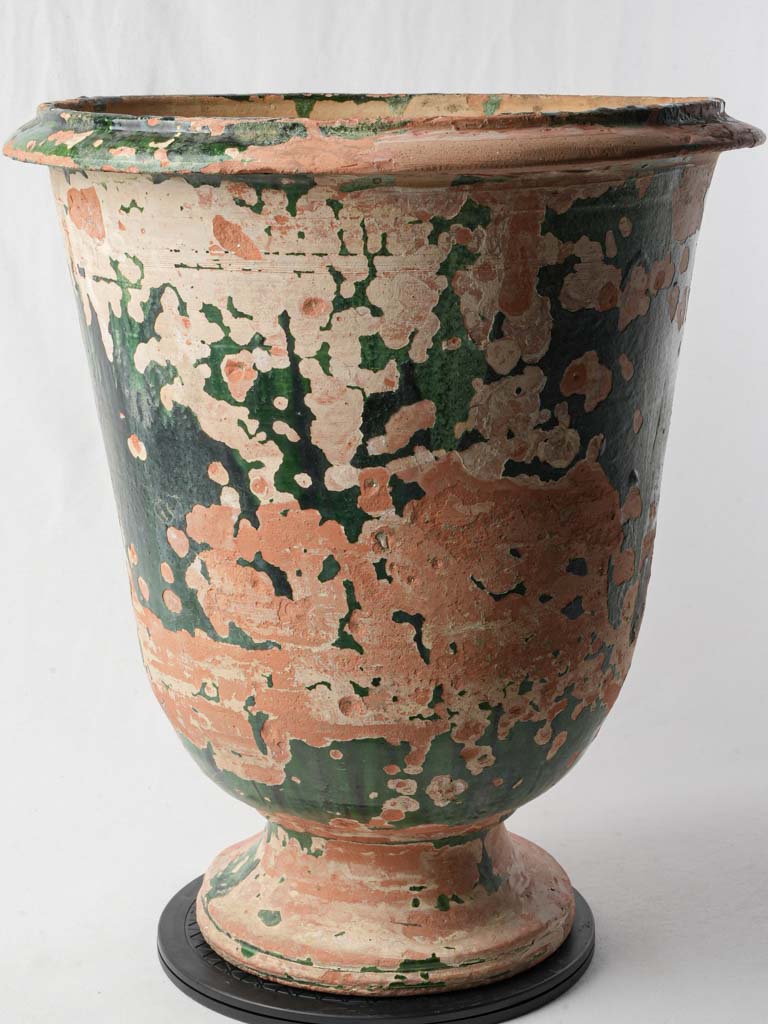
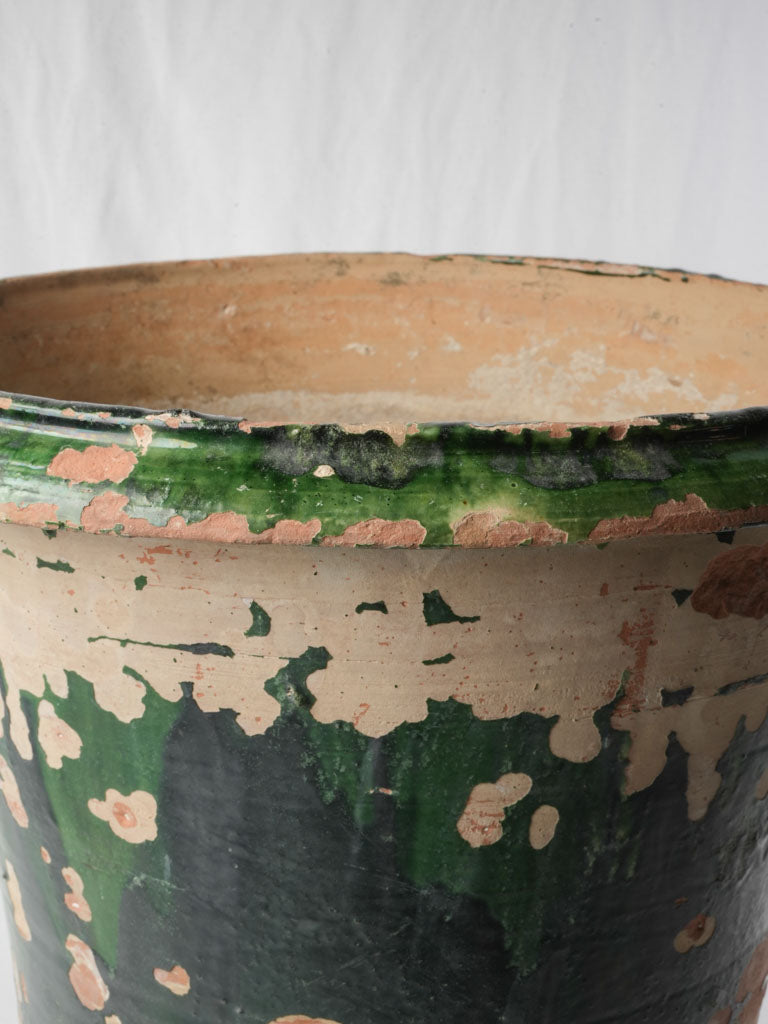
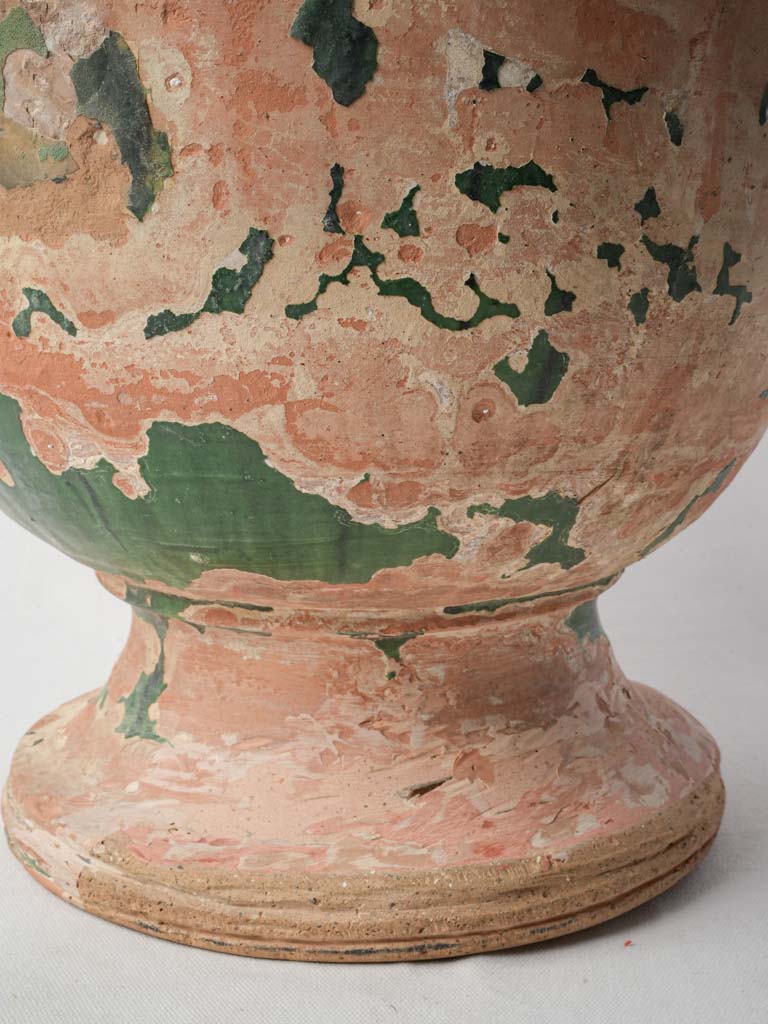
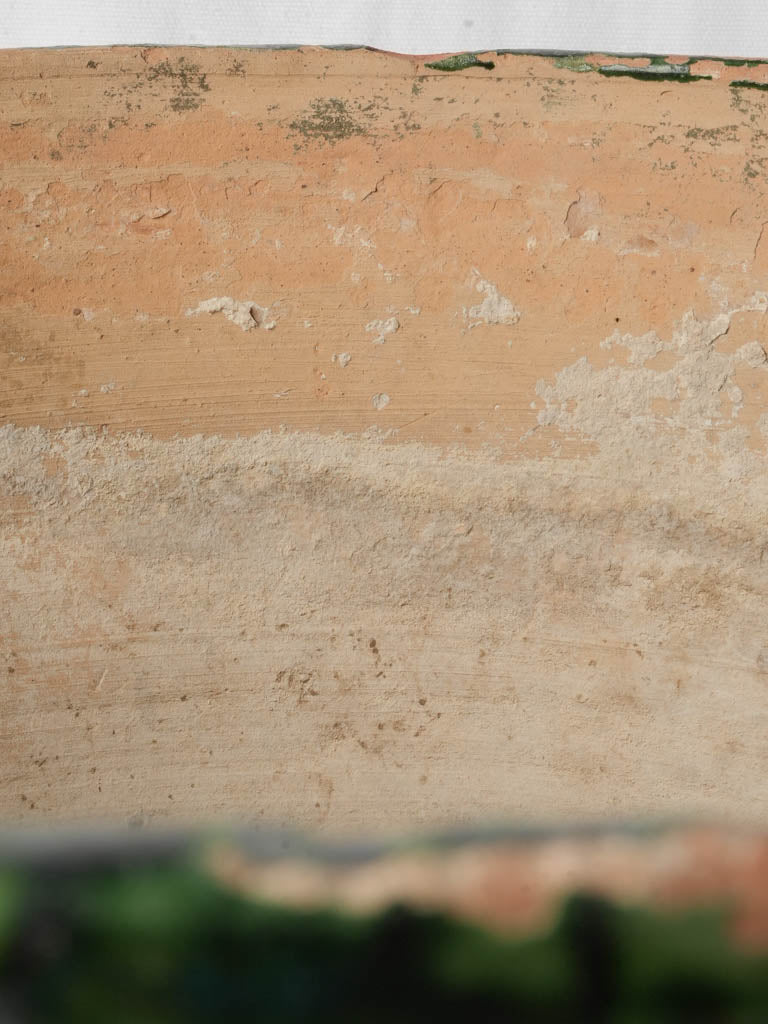
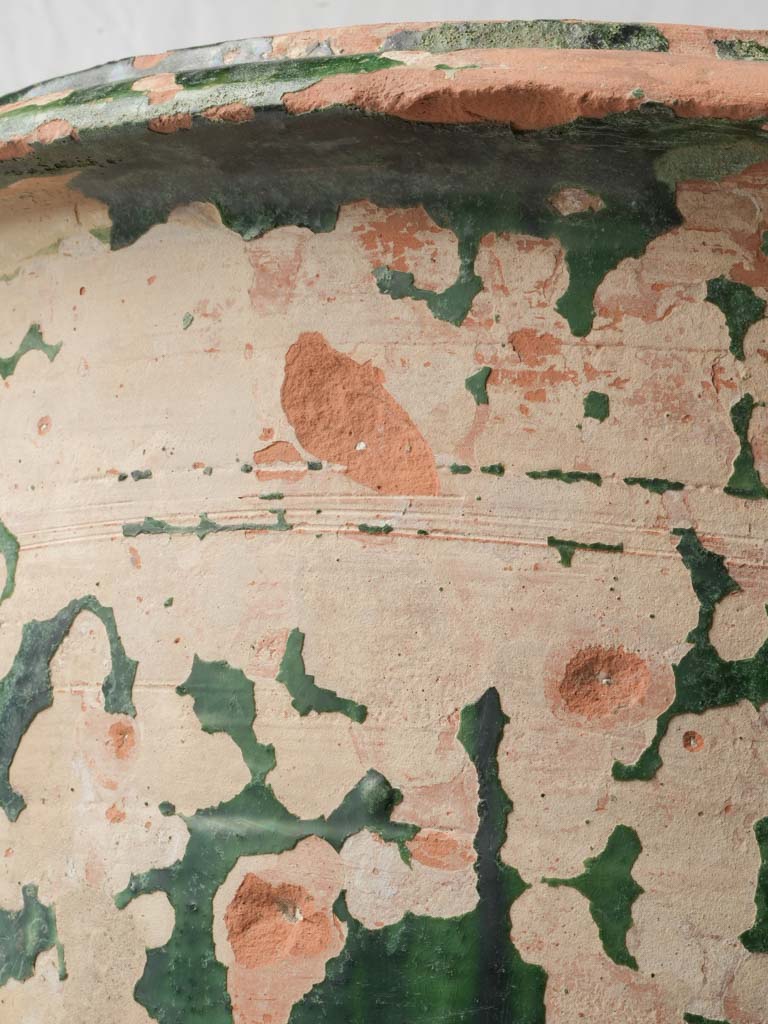
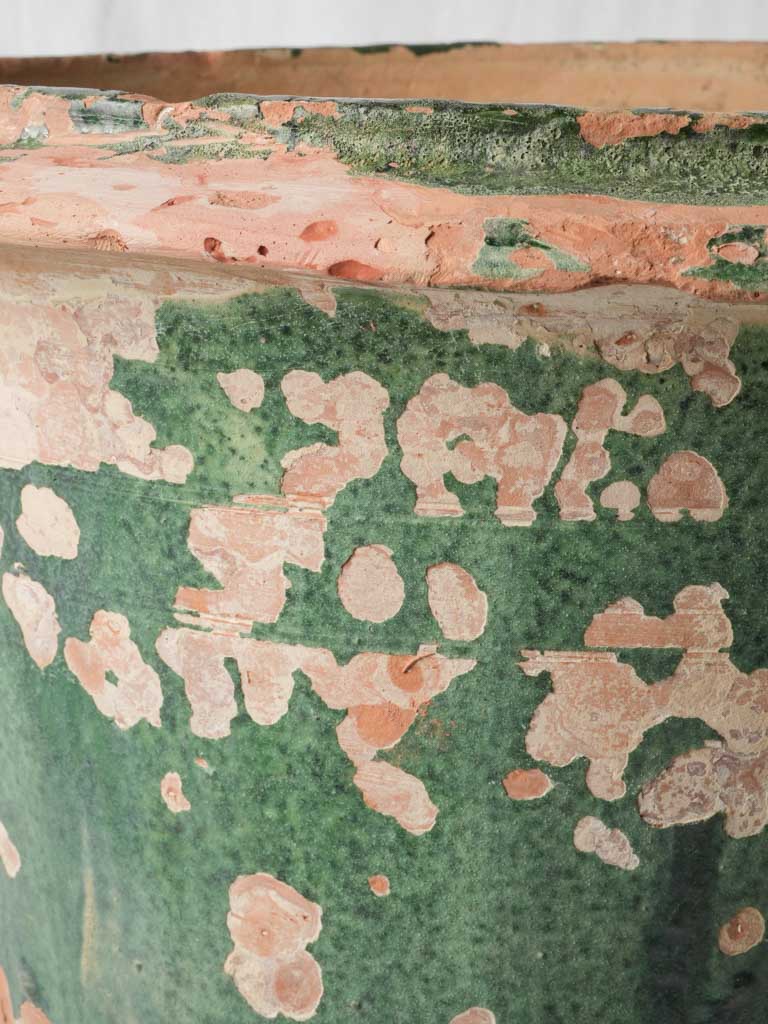
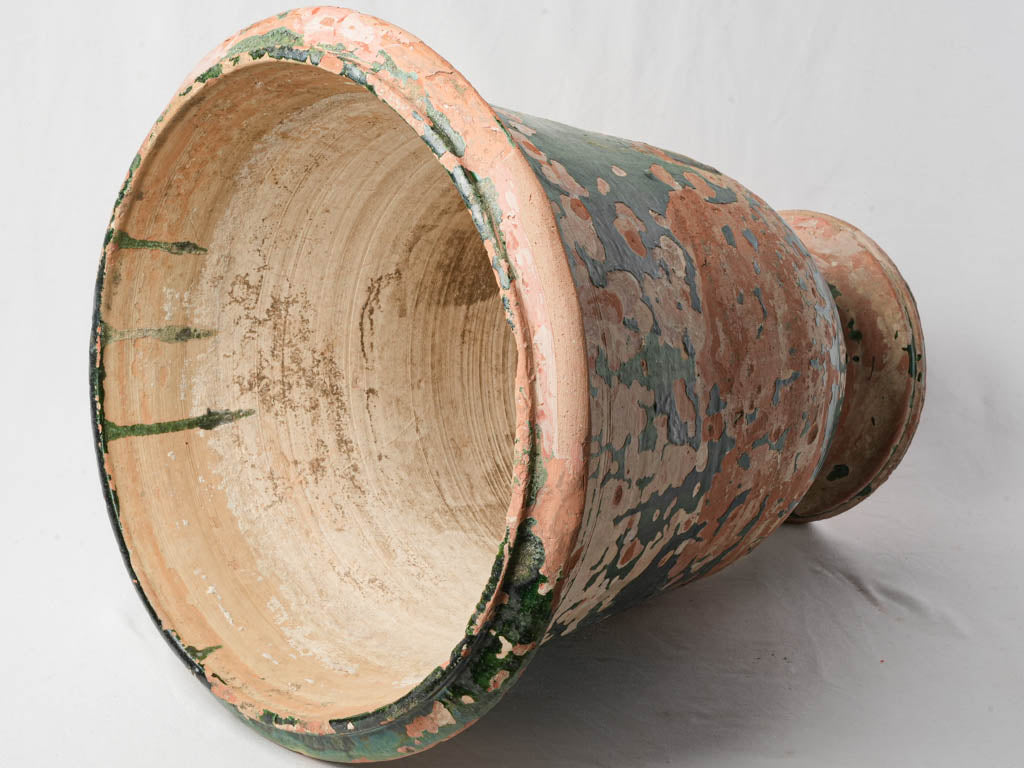
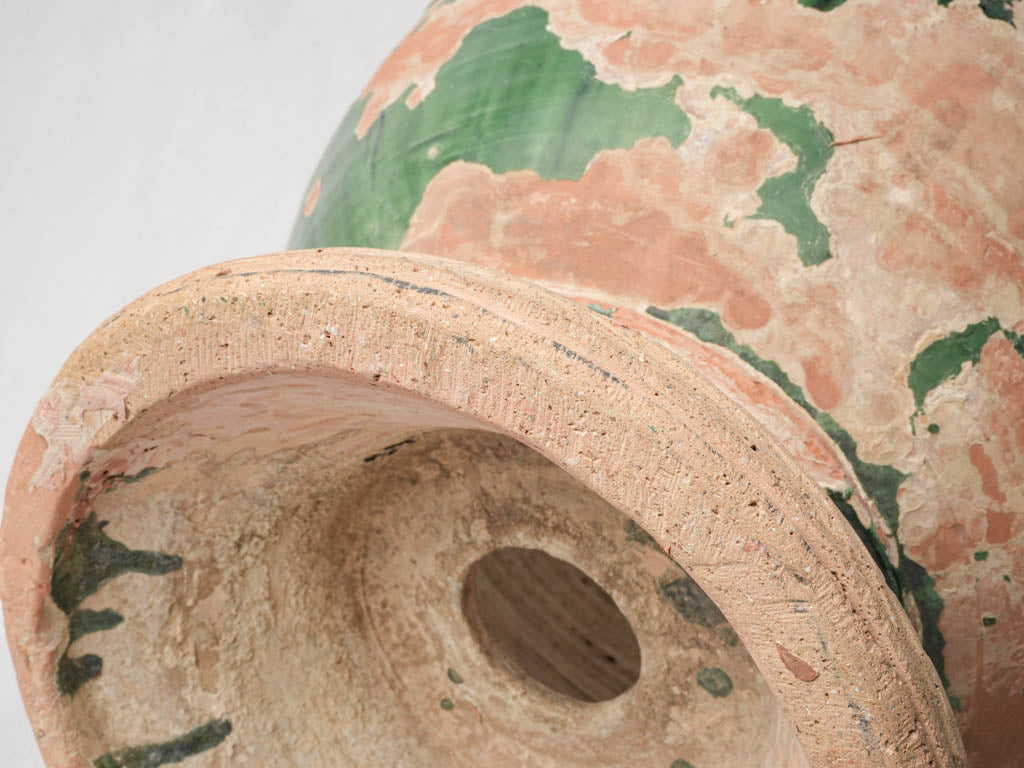
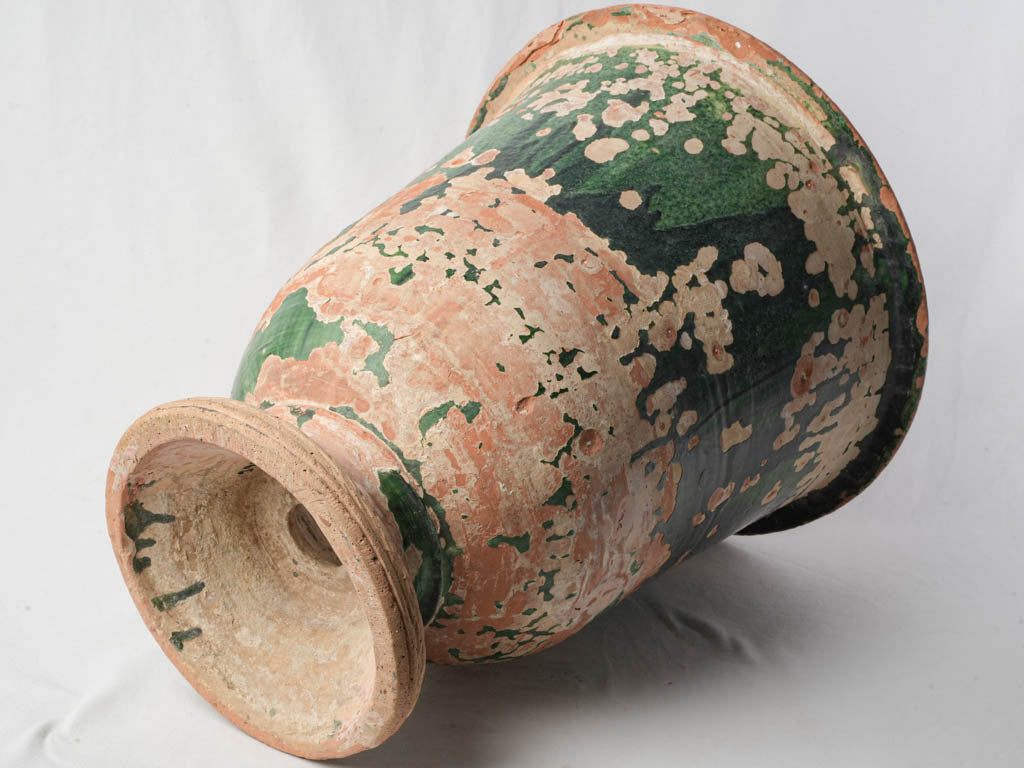
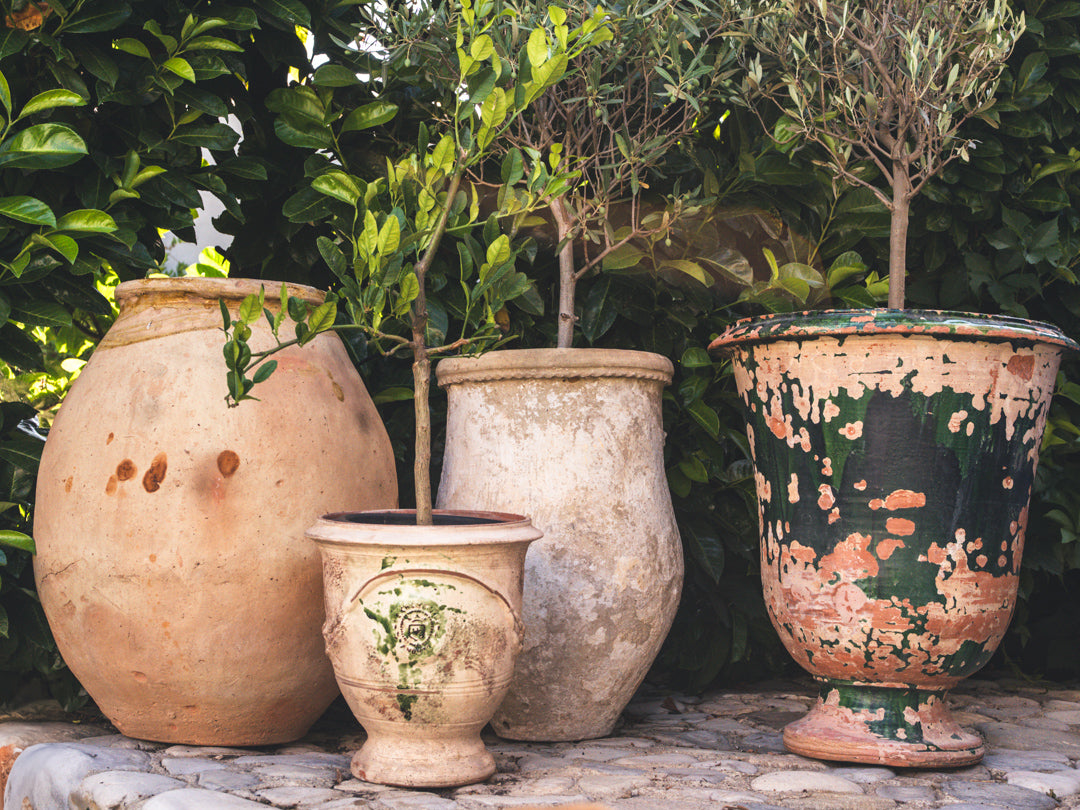
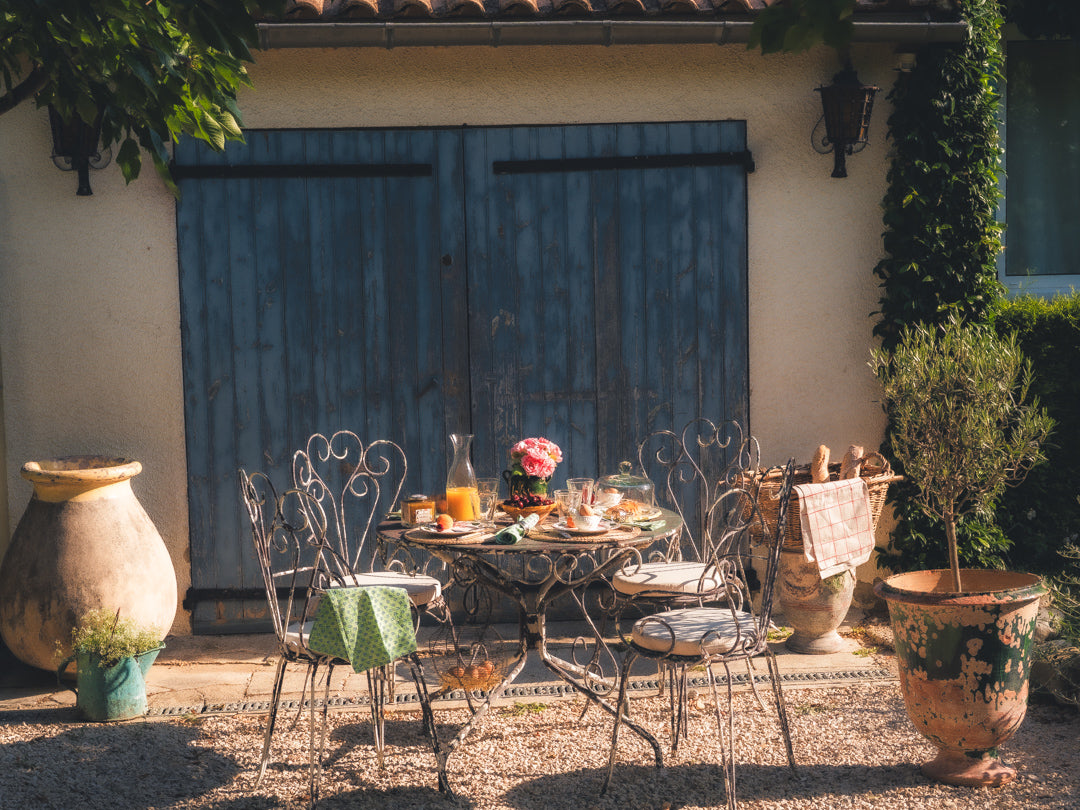
Exceptional Early 19th-Century Anduze Terracotta Planter w/ Green Patina 24"
All inclusive pricing to USA
The price includes duties, taxes, tariffs and shipping. No more to pay for destinations within the US.
A rare early 19th-century Anduze terracotta planter, circa 1820, distinguished by its tulip-shaped silhouette and richly weathered green glaze. This traditional form, originating from the town of Anduze in the Cévennes region of southern France, traces its roots to the early 17th century. Inspired by Italian Medici vase forms, the first documented Anduze planter was created by a local potter named Boisset in 1610. These ornamental vessels quickly gained popularity across aristocratic gardens in southern France for their robust construction and elegant contours. Crafted from local terracotta and finished with a distinctive lead glaze—often in shades of green, honey, or brown—each piece was both decorative and utilitarian.
The example here features a striking timeworn patina where layers of glaze and slip have softened over time, revealing the natural clay beneath in painterly texture. In notably good condition for its age, with a practical drainage hole at the base, this planter is a sculptural focal point imbued with the rustic sophistication of Provençal garden design.
Condition and wear consistent with age and use.
Approx. overall 24" high x 20½" diameter externally. Opening 17" diameter
Approx. overall 61cm high x 52cm diameter externally. Opening 43cm diameter
Choose options

